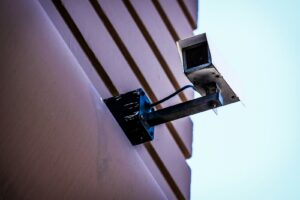The Importance of Physical Security in Protecting IoT Devices
Understanding the Risks of Physical Security Breaches
Physical security of IoT devices is a critical aspect of safeguarding these technologies against unauthorized access and potential breaches. In the advanced technological landscapes of Saudi Arabia and the UAE, cities like Riyadh and Dubai are heavily investing in IoT to drive innovation and operational efficiency. However, the physical security of these devices is often overlooked, exposing businesses to significant risks. When IoT devices are physically compromised, attackers can gain direct access to the hardware, leading to data breaches, operational disruptions, and financial losses.
For instance, in Riyadh’s smart infrastructure projects, IoT devices deployed in public spaces are vulnerable to physical tampering. If these devices are not adequately secured, malicious actors can alter their configurations, intercept data, or introduce malware into the network. Such physical breaches can disrupt critical services like traffic management and public safety, highlighting the need for robust physical security measures.
Similarly, in Dubai’s industrial sectors, IoT devices used for monitoring and controlling machinery can become targets for industrial espionage or sabotage if left unprotected. Physical access to these devices allows attackers to manipulate production processes, causing operational downtime and compromising product quality. Ensuring the physical security of IoT devices is, therefore, not just about protecting data but also about maintaining the integrity and reliability of essential services and operations.
Recommended Physical Protection Measures
Implementing effective physical protection measures is essential for securing IoT devices against unauthorized access. Businesses in Saudi Arabia and the UAE can adopt several strategies to enhance the physical security of their IoT deployments. One fundamental approach is to use tamper-evident enclosures for IoT devices. These enclosures are designed to show visible signs of tampering, deterring potential attackers and alerting administrators to any unauthorized access attempts.
Additionally, placing IoT devices in secure, access-controlled environments can significantly reduce the risk of physical tampering. In Riyadh’s smart building projects, for example, IoT sensors and controllers can be installed in locked cabinets or rooms accessible only to authorized personnel. This restricts physical access to the devices, ensuring that only trained and trusted individuals can interact with them. Combining physical barriers with access control mechanisms like biometric scanners or keycard systems further enhances security.
Another effective measure is to deploy physical surveillance systems around critical IoT installations. In Dubai’s financial institutions, surveillance cameras and motion detectors can monitor the physical security of IoT devices used in ATMs and other sensitive areas. These surveillance systems can provide real-time alerts in case of suspicious activities, enabling quick response to potential security threats. By integrating these physical protection measures, businesses can create a robust defense against unauthorized access to their IoT devices.
Implementing Comprehensive Security Strategies for IoT Devices
Integrating Physical Security with Cybersecurity
To ensure comprehensive protection of IoT devices, businesses must integrate physical security measures with cybersecurity strategies. In Saudi Arabia and the UAE, where digital transformation is rapidly progressing, a holistic approach to IoT security is essential. This involves implementing both physical and cyber defenses to create a multi-layered security framework that addresses various threats.
For instance, in Riyadh’s healthcare sector, IoT devices that monitor patient vitals must be secured both physically and digitally. Physical security measures, such as locking devices in secure cabinets and using tamper-evident seals, can be complemented by cybersecurity practices like encrypting data transmissions and using strong authentication protocols. This integrated approach ensures that even if a device’s physical security is compromised, the data it handles remains protected against unauthorized access.
Similarly, in Dubai’s smart transportation systems, securing IoT devices installed in vehicles and traffic management infrastructure requires a combination of physical and cyber protections. While physical barriers and surveillance can prevent tampering, cybersecurity measures such as network segmentation and intrusion detection systems can safeguard the data and communication channels used by these devices. By aligning physical security with cybersecurity, businesses can achieve a comprehensive security posture that mitigates a wide range of risks.
Training and Awareness Programs
Enhancing the physical security of IoT devices also requires ongoing training and awareness programs for employees. In Saudi Arabia and the UAE, businesses can benefit from educating their staff about the importance of physical security and the specific measures needed to protect IoT devices. Executive coaching services can play a vital role in preparing leadership teams to prioritize security and develop effective training programs.
For example, in Riyadh’s industrial facilities, training programs can focus on teaching employees how to identify signs of physical tampering and the procedures to follow if a security breach is suspected. Employees should also be trained on the correct handling and maintenance of IoT devices to prevent accidental damage or unauthorized access. Regular security drills and simulations can reinforce this training, ensuring that employees remain vigilant and prepared to respond to security incidents.
In Dubai’s retail sector, staff can be trained to secure IoT devices used in point-of-sale systems and inventory management. This includes practices like securing devices when not in use, regularly checking for signs of tampering, and reporting any suspicious activities. By fostering a culture of security awareness, businesses can empower their employees to contribute to the overall protection of IoT devices and mitigate physical security risks effectively.
Continuous Monitoring and Improvement
The final component of a successful physical security strategy for IoT devices is continuous monitoring and improvement. Businesses in Saudi Arabia and the UAE must regularly assess their physical security measures and adapt them to evolving threats. This involves conducting periodic security audits, reviewing access control policies, and updating physical security technologies as needed.
In Riyadh’s smart city projects, continuous monitoring can include regular inspections of IoT installations and the use of advanced analytics to detect anomalies in physical security data. For example, monitoring systems can track access patterns to secure areas and flag any unusual activities for further investigation. This proactive approach enables businesses to identify and address potential security gaps before they are exploited.
In Dubai’s technology-driven industries, staying updated with the latest advancements in physical security technologies is crucial. Businesses can explore innovative solutions like biometric authentication, smart locks, and AI-powered surveillance systems to enhance the protection of their IoT devices. By investing in continuous improvement and staying ahead of emerging threats, businesses can maintain a robust physical security posture that effectively safeguards their IoT deployments.
Conclusion
In conclusion, ensuring the physical security of IoT devices is essential for preventing unauthorized access and maintaining the integrity of IoT systems. For businesses in Saudi Arabia and the UAE, implementing robust physical protection measures, integrating them with cybersecurity strategies, and fostering a culture of security awareness are critical steps. By continuously monitoring and improving their security practices, businesses can effectively safeguard their IoT devices and ensure the success of their digital transformation initiatives. The strategic implementation of physical security not only protects valuable data and assets but also strengthens the foundation for sustained business success in the digital age.
—
#PhysicalSecurity, #IoTDevices, #UnauthorizedAccess, #SmartTechnology, #BusinessEfficiency, #SaudiArabia, #UAE, #Riyadh, #Dubai, #AI, #Blockchain, #Metaverse, #ExecutiveCoaching, #GenerativeAI, #Leadership, #Management, #ProjectManagement













